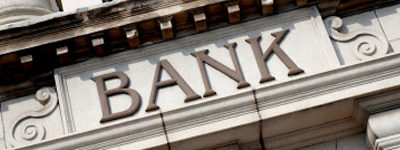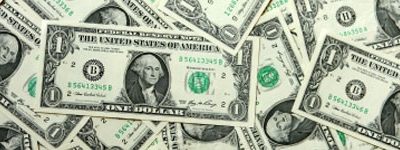%
Jubak’s Picks Performance 1997-2019
Jubak’s Picks
Buy and hold? Not really.
Short-term trading?
Not by a long shot.
So what is the stock-picking style of The Jubak’s Picks portfolio?
Click to expand...
Click to View the Jubak’s Picks Portfolio
I try to go with the market’s momentum when the trend is strong and the risk isn’t too high, and I go against the herd when the bulls have turned piggy and the bears have lost all perspective. What are the results of this moderately active — the holding period is 12 to 18 months — all-stock portfolio since inception in May 1997? A total return of 584% as of December 31, 2019. That compares to a total return on the S&P 500 stock index of 335% during the same period.
%
Top 50 Stocks Performance 2019
Top 50 Stocks
This long-term, buy-and-holdish portfolio was originally based on my 2008 book The Jubak Picks.
Trends that are strong enough, global enough, and long-lasting enough to surpass stock market averages.
Click to expand...
Click to view the Top 50 Stocks Portfolio
In The Jubak’s Picks Portfolio I identified ten trends that were strong enough, global enough, and long-lasting enough to give anyone who invested in them a good chance of beating the stock market averages.
To mark the publication of my new book on volatility, Juggling with Knives, and to bring the existing long-term picks portfolio into line with what I learned in writing that book and my best new ideas on how to invest for the long-term in a period of high volatility, I’m completely overhauling the existing Top 50 Picks portfolio.
You can buy Juggling with Knives at bit.ly/jugglingwithknives
%
Dividend Income Performance 2021
Dividend Income
Every income investor needs a healthy dose of dividend stocks.
Why bother?
Why not just concentrate on bonds or CDs?
Click to expand...
Click to view the Dividend Income Portfolio
Because all the different income-producing assets available to income investors have characteristics that make them suited to one market and not another. You need all of these types of assets if you’re going to generate maximum income with minimum risk as the market twists and turns.
For example: bonds are great when interest rates are falling. Buy early in that kind of market and you can just sit back and collect that initial high yield as well as the capital gains that are generated as the bonds appreciate in price with each drop in interest rates.
CDs, on the other hand, are a great way to lock in a yield with almost absolute safety when you’d like to avoid the risk of having to reinvest in an uncertain market or when interest rates are crashing.
Dividend stocks have one very special characteristic that sets them apart from bonds and CDs: companies raise dividends over time. Some companies raise them significantly from one quarter or year to the next. That makes a dividend-paying stock one of the best sources of income when interest rates start to rise.
Bonds will get killed in that environment because bond prices will fall so that yields on existing bonds keep pace with rising interest rates.
But because interest rates usually go up during periods when the economy is cooking, there’s a very good chance that the company you own will be seeing rising profits. And that it will raise its dividend payout to share some of that with shareholders.
With a dividend stock you’ve got a chance that the yield you’re collecting will keep up with rising market interest rates.
But wouldn’t ya know it?
Just when dividend investing is getting to be more important—becoming in my opinion the key stock market strategy for the current market environment—it’s also getting to be more difficult to execute with shifting tax rates and special dividends distorting the reported yield on many stocks.
I think there’s really only one real choice—investors have to pull up their socks and work even harder at their dividend investing strategy. That’s why I revamped the format of the Dividend Income portfolio that I’ve been running since October 2009. The changes aren’t to the basic strategy. That’s worked well, I think, and I’ll give you some numbers later on so you can judge for yourself. No, the changes are designed to do two things: First, to let you and me track the performance of the portfolio more comprehensively and more easily compare it to the performance turned in by other strategies, and second, to generate a bigger and more frequent roster of dividend picks so that readers, especially readers who suddenly have a need to put more money to work in a dividend strategy, have more dividend choices to work with.
Why is dividend investing so important in this environment? I’ve laid out the reasons elsewhere but let me recapitulate here. Volatility will create repeated opportunities to capture yields of 5%–the “new normal” and “paranormal” target rate of return–or more as stock prices fall in the latest panic. By using that 5% dividend yield as a target for buys (and sells) dividend investors will avoid the worst of buying high (yields won’t justify the buy) and selling low (yields will argue that this is a time to buy.) And unlike bond payouts, which are fixed by coupon, stock dividends can rise with time, giving investors some protection against inflation.
The challenge in dividend investing during this period is using dividend yield as a guide to buying and selling without becoming totally and exclusively focused on yield. What continues to matter most is total return. A 5% yield can get wiped out very easily by a relatively small drop in share price.
Going forward, I will continue to report on the cash thrown off by the portfolio—since I recognize that many investors are looking for ways to increase their current cash incomes. But I’m also going to report the total return on the portfolio—so you can compare this performance to other alternatives—and I’m going to assume that an investor will reinvest the cash from these dividend stocks back into other dividend stocks. That will give the portfolio—and investors who follow it—the advantage of compounding over time, one of the biggest strengths in any dividend income strategy.
What are some of the numbers on this portfolio? $29,477 in dividends received from October 2009 through December 31, 2013. On the original $100,000 investment in October 2009 that comes to a 29.5% payout on that initial investment over a period of 39 months. That’s a compound annual growth rate of 8.27%.
And since we care about total return, how about capital gains or losses from the portfolio? The total equity price value of the portfolio came to $119,958 on December 31, 2012. That’s a gain of $19,958 over 39 months on that initial $100,000 investment or a compound annual growth rate of 5.76%.
The total return on the portfolio for that period comes to $49,435 or a compound annual growth rate of 13.2%.
How does that compare to the total return on the Standard & Poor’s 500 Stock Index for that 39-month period? In that period $100,000 invested in the S&P 500 would have grown to $141,468 with price appreciation and dividends included.) That’s a total compounded annual rate of return of 11.26%.
That’s an annual 2 percentage point advantage to my Dividend Income portfolio. That’s significant, I’d argue, in the context of a low risk strategy.
Portfolio Related Posts
My eighth stock pick of Christmas is Bank of America–and eight maids a-milking
I’m adding shares of Bank of America (BAC) to my Dividend Portfolio today. The stock yields only 1.2% on trailing 12-month dividend payments so why am I adding it to a portfolio dedicated to beating the yield on the 10-year Treasury bond? Because Bank of America has three things going for it at the moment.
My seventh stock pick of Christmas is McDonald’s–and seven swans a-swimming
I’ve become convinced that the best way to think about McDonald’s (MCD) and other established fast-food stocks is as cyclicals. Oh, not in the usual way where the fortunes of a company rise and fall with the cycles in the economy. No, I think the established fast food companies–the McDonald’s, the Burger Kings, and the Wendy’s of the world–seem increasingly to be a zero sum game where one company rises as it steals customers from competitors after the roll-out of some temporarily innovative product and then loses those customers back again to competitors as those companies roll out their own new initiatives. McDonald’s is almost a test case of that way of thinking about the sector.
Turmoil isn’t done in lithium sector with volatility at SQM and ALB
The announcement of a deal between Sociedad Química y Minera de Chile (SQM) and Chile’s development agency CORFO that resolves a long-standing dispute on royalty rates and that would allow SQM to expand lithium production from the brines at government-owned Salar de Atacama in Chile’s Atacama Desert has roiled the entire lithium sector
Dividend Portfolio total 2017 return 6.48%; 2 buys and 2 sells in 2018 rebalancing
2017 was a tough year for benchmarking my Dividend Portfolio. For the year the total price appreciation on the stocks in the portfolio was 3.4% The 21.64% return on the Standard & Poor’s 500 crushed that. The dividend yield on the portfolio for the year came to 3.11%. Which beat the 2.8% total return from holding 10-year Treasury bonds for 2017. The total return on my Dividend Portfolio for 2017 was 6.48%.
Consumer Electronics Show caps great month for Synaptics
Shares of Synaptics (SYNA) closed up 13.35% today at $49.76 thanks to an upgrade to sector overweight from sector weight from KeyBanc Capital Markets and a very impressive showing for the company’s fingerprint technology for smartphones at the just concluded Consumer Electronics Show. Synaptics, a member of my Jubak Picks Portfolio–a lagging member, I’d certainly add–is now up 40.6% from its December 6 low at $35.40.
I’m adding copper exposure to my Jubak’s Picks Portfolio by moving Freeport McMoRan Copper & Gold from my 50 Stocks Portfolio
By this time I think you get the message: I like the trend in copper prices and copper stocks over the next five years. I've added copper producers South Copper (SCCO) to my long-term 50 Stocks Portfolio and First Quantum Minerals (FQVLF) to my volatility portfolio....
Nektar soars today on J.P. Morgan healthcare conference
Anybody still think that conferences, especially biotech conferences, don’t move stock prices? Shares of Nektar Therapeutics (NKTR) are up 7.65% today to $61.79 as of noon New York time on the company’s appearance at this week’s J.P. Morgan biotech conference. The slides from the company’s presentation today are in circulation but CEO Howard Robin doesn’t actually present until 2 p.m. New York time today.
Are bond yields finally climbing (and bond prices falling) in a belated response to a global shift in central bank policies?
The yield on the 10-year U.S. Treasury climbed 7 basis points today to 2.55%. That’s the highest yield since March. That prompted bond guru Bill Gross to declare that we have entered a confirmed bear market in bonds with the upward trend lines of 25 years broken for 5-and 10-year Treasuries.










